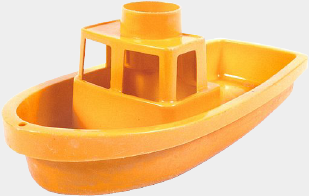One of the most unfortunate practices I see often in instruction is when a teacher’s goal is to get “right answers” from students. This is not to say that getting your students to get it right is wrong–in fact, it’s very desirable. Usually what happens, however, is the teacher is engaged in teaching a concept and then pauses to “test” to see if students are getting it. The teacher asks a question intended to solicit a right answer, then is satisfied when one or two students answer correctly. It seems that in the mind of the teacher a right answer indicates that learning has taken place and the student understands the concept.

But the truth is that a “right answer” may merely indicate that the learner has learned to mimic the teacher’s explanation—or it could mean that the learner made a lucky guess! When I was in grade school I was chosen to be the spokesperson for an exhibit at the annual science fair. My job was to stand in front of a large container of water upon which were two small model boats. One model was intact and floated on the surface, but the other model had a hole in it. When I placed the second model boat on the surface of the water it would soon take on water and sink. I remember that my job was to explain to people why a boat with a hole in its hull sinks. I was chosen for the job because apparently I gave the “right†explanation well. But I have to confess that I was well aware that I didn’t really understand what it was that I was explaining! Even as I was giving the explanation to enraptured groups of students and teachers, I was keenly aware that I didn’t know what I was talking about. I’d learned to mimic my science teacher’s explanation, but I didn’t understand it.
Even when a learner gives a right answer, the skilled teacher will use the opportunity to follow up on how the learner arrived at the correct answer. Effective teachers assess understanding of the concepts being learned, not just test for “right answers.” In other words, effective teachers do not just focus on what a student says in an answer, but also assesses how a student arrived at the answer.
One way to help learners acquire deeper understanding is to be more intentional in your response to student answers. When responding to a learner’s correct answer, don’t just say, “Right!” or “That’s correct!” Respond in a way that will both enforce the correct answer and help teach the group about why an answer is correct and how to arrive at the right answer. Teacher responses that include information about why the learner’s answer is correct, such as rephrasing the response to emphasize factors that make the answer correct, or the steps or methods used to get the correct answer, are helpful to other learners who are in the process of learning the reasoning behind why something is so, or who are trying to figure out the steps for arriving at an accurate answer to the question being posed.
You can help students move beyond mimicking a “right answer†and toward comprehension by:
- Amplifying the student’s response
- Restating, modifying, or rephrasing the learner’s response and redirect for further discussion
- Asking the student to explain how he or she arrived at the answer
- Asking the student to provide an example or a corollary
- Probing for further discussion.

Can you explain why a boat sinks?
